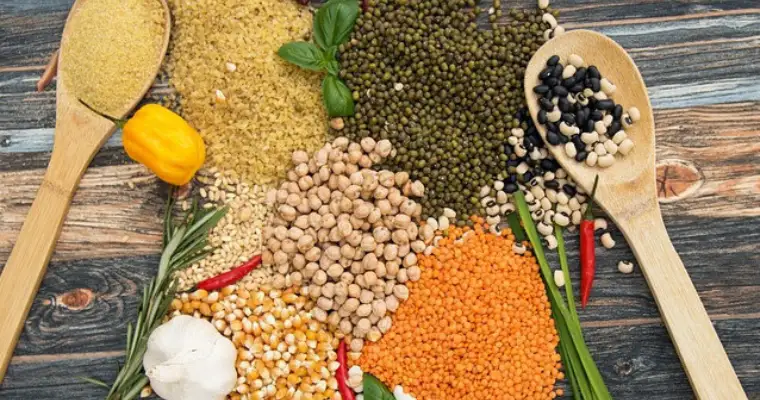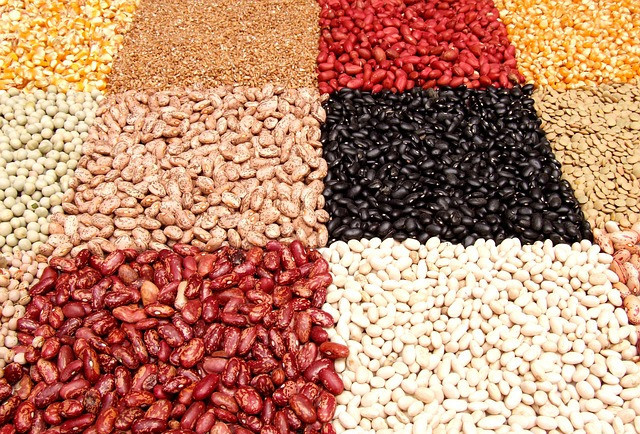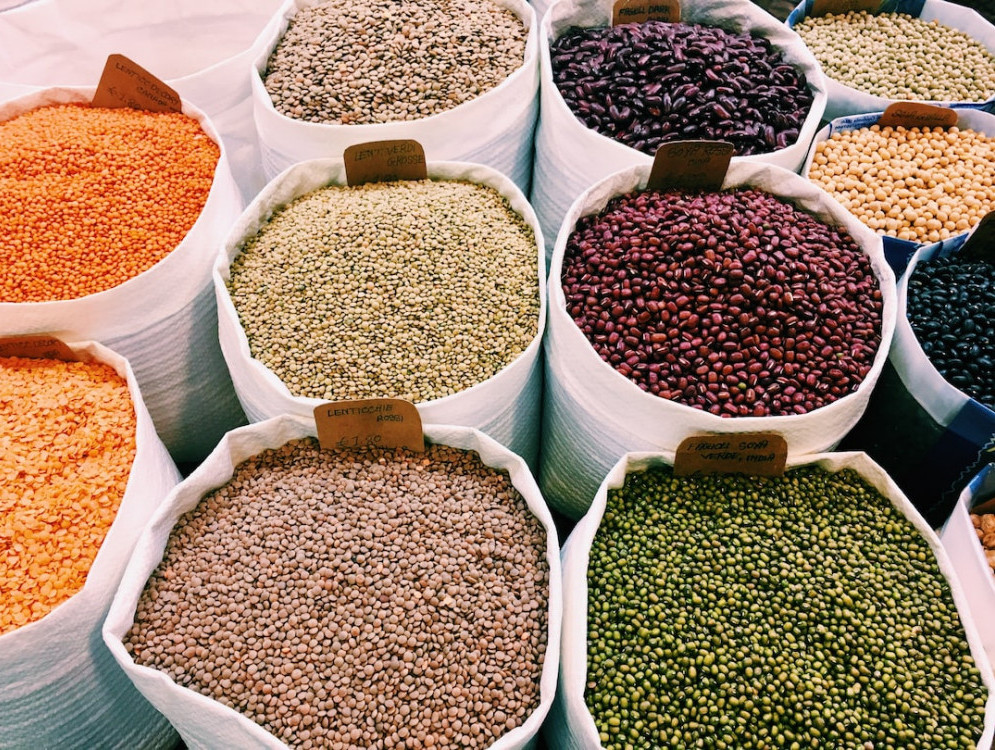What are Beans and Legumes?

What are Beans and Legumes?
Powerhouses for Whole Food Plant-Based Diets
What are Beans and Legumes? They are a nutrient-rich, versatile, and an essential component of a well-rounded whole food plant-based diet. With their impressive range of flavors and textures, they offer a myriad of culinary possibilities.
Let’s explore the different types of beans and legumes and their benefits, while also studying their uses in many popular cuisines across throughout the world.

It is important to understand the differences between legumes and beans.
While these terms are often used interchangeably, there are some differences to consider:
In comparison, Beans are a specific subset of legumes. They are characterized by their seed pods, which typically split open along a seam revealing the beans inside. Examples of beans include kidney beans, black beans, pinto beans, and navy beans.
Beans can be further categorized as either dry beans (requiring soaking and cooking) or like green beans (eaten fresh or lightly cooked).
On the other hand, Legumes encompass a broader category of plants that include beans but also other types of seeds or fruits that grow in pods. Legumes include beans, lentils, chickpeas, peas, and soybeans.
They are known for their high protein content, nutrient density, and ability to fix nitrogen in the soil, improving soil fertility.
In summary, all beans are legumes, but not all legumes are beans. Beans specifically refer to the seeds of certain legume plants, while legumes encompass a wider variety of plants that produce seeds or fruits in pods.
Both beans and other legumes offer numerous health benefits and are valuable components of a whole food plant-based diet.
Including a diverse range of legumes in your diet provides a wide array of flavors, textures, and nutritional profiles, allowing for creativity in plant-based cooking.
Let’s clarify the difference between lentils and beans:
Whereas Lentils are a type of legume that belong to the botanical family known as Fabaceae. They are small, lens-shaped seeds that come in various colors, including green, brown, red, and black. Lentils have a soft texture and cook relatively quickly compared to beans.
They are commonly used in a wide range of cuisines and dishes, including soups, stews, salads, and side dishes. Lentils are known for their earthy flavors, versatility, and nutritional benefits.
As we learned earlier, Beans on the other hand are a specific type of legume that typically refers to large seeds that grow in pods. They have a more pronounced seed coat and require a longer cooking time compared to lentils.
Beans come in various varieties, such as kidney beans, black beans, pinto beans, and navy beans. They have different sizes, shapes, flavors, and textures. Beans are widely used in numerous cuisines worldwide and are popular in dishes like chilies, stews, salads, and bean-based spreads.
While lentils and beans are both legumes, the main difference lies in their size, shape, cooking time, and texture. Lentils are smaller, lens-shaped seeds that cook relatively quickly and have a soft texture when cooked.
Beans, on the other hand, are larger seeds that require longer cooking times and have a firmer texture when cooked.
Nutrition Benefits
In terms of nutrition, both lentils and beans are excellent sources of whole food plant-based protein, fiber, vitamins, and minerals. They are low in fat and cholesterol and provide essential nutrients for a balanced and healthy diet.
Incorporating a variety of lentils and beans into a plant-based lifestyle offers not only diverse flavors but also a wide range of health benefits.
So, whether you’re enjoying a comforting lentil soup or a hearty bean-based chili, both lentils and beans provide nourishment and deliciousness to your plant-based meals.
Top Beans and Legumes for a Plant Based Diet:
Chickpeas: Chickpeas, also known as garbanzo beans, are one of the most popular legumes. They have a buttery texture and a nutty flavor that adds depth to various dishes.
Chickpeas shine in Middle Eastern cuisine as the main ingredient in hummus, falafel, and stews like chana masala. They are also excellent additions to salads, grain bowls, and curries.
Pinto Beans: Pinto beans are medium-sized, speckled legumes commonly used in Mexican and Southwestern cuisine. They have a creamy texture and a slightly earthy flavor.
Pinto beans are a staple in dishes like refried beans, chili, and burritos. They can also be used in salads, soups, and stews. Pinto beans are an excellent source of protein, fiber, and essential minerals like iron and folate, making them a nutritious addition to a plant-based diet.
Black Beans:
Black beans are a staple in Latin American cuisine and known for their rich, earthy taste and velvety texture. They are commonly used in dishes such as black bean soup,
Cuban black beans and rice, and Mexican-inspired burritos and tacos. Black beans are also a great addition to salads and grain-based bowls, adding both protein and flavor.
Kidney Beans:
Kidney beans are kidney-shaped legumes with a robust flavor and firm texture. They are a key ingredient in classic chili recipes, where their creamy texture and deep color shine.
Kidney beans also make delicious additions to salads, stews, and bean-based spreads like hummus.
Cannellini Beans:
Cannellini beans, also called white kidney beans, are creamy white legumes commonly used in Italian cuisine. They have a delicate, buttery flavor and a smooth, creamy texture.
Cannellini beans are perfect for hearty soups like minestrone and pasta e fagioli. They can also be pureed into a smooth dip or added to salads for a protein boost.
Navy Beans:
Navy beans, also known as haricot beans, are small, oval-shaped legumes that have a mild flavor and creamy texture. They are commonly used in American cuisine, particularly in dishes like Boston baked beans and white bean soups.
Navy beans are also a popular choice for making creamy bean dips or spreads.
Soybeans:
Soybeans are a versatile legume that is widely consumed around the world. They are the basis for numerous soy products, including tofu, tempeh, and soy milk. Soybeans are highly nutritious and provide a complete source of protein.
They are used in various cuisines, such as stir-fries, salads, and plant-based meat substitutes.
Lima Beans:
Lima beans, also known as butter beans, have a delicate flavor and a buttery texture. They are commonly found in Mediterranean and Latin American cuisines.
Lima beans are often used in succotash, a traditional American dish consisting of corn, lima beans, and other vegetables. They can also be added to soups, stews, and casseroles.
Baby Lima Beans: Baby lima beans, also known as butter beans, are smaller versions of the larger lima beans. They have a delicate, buttery flavor and a smooth, creamy texture.
Baby lima beans are often used in Southern US and Mediterranean cuisine. They are perfect for dishes like bean salads, and vegetable stews. Baby lima beans are rich in fiber, folate, and potassium, providing essential nutrients for a well-rounded plant-based diet.
Adzuki Beans:
Adzuki beans are small, reddish-brown legumes that are native to East Asia. They have a slightly sweet flavor and are commonly used in Asian desserts and pastries.
Adzuki beans are also a popular filling for sweet bean paste in Japanese confections like dorayaki and taiyaki. They can be cooked and enjoyed in savory dishes as well.
Mung Beans:
Mung beans are small, green legumes that are commonly used in Asian cuisines, particularly in Indian and Southeast Asian dishes. They have a mild, earthy flavor and a soft texture when cooked.
Mung beans are versatile and can be sprouted to make bean sprouts or cooked into stews, curries, and dals.
Red Kidney Beans:
Red kidney beans are kidney-shaped legumes with a robust flavor and a meaty texture. They are often used in Tex-Mex and Caribbean cuisines. Red kidney beans are a key ingredient in chili and are also used in rice and bean dishes such as arroz con habichuelas.
They can be cooked and added to salads, soups, and dips.
Here are the top Lentils and their attributes in a Plant-Based diet:
Green Lentils: Green lentils are commonly used in salads, soups, and side dishes. They hold their shape well when cooked, providing a hearty texture. Green lentils are a good source of protein, fiber, iron, and folate.
Brown Lentils: Brown lentils are versatile and widely available. They have a mild, earthy flavor and are suitable for a variety of dishes, including stews, curries, and lentil-based spreads. Brown lentils are rich in protein, fiber, and essential minerals.
Red Lentils: Red lentils cook quickly and have a softer texture when compared to other lentil varieties. Used commonly in Indian dals, soups, and purees. Red lentils are packed with protein, fiber, and folate.
French Lentils: French lentils, also known as Puy lentils, have a dark, slate-green color and a peppery flavor. They hold their shape well when cooked, making them ideal for salads, side dishes, and lentil-based patties. French lentils are a great source of protein, fiber, iron, and antioxidants.
Beluga Lentils: Beluga lentils are small and black, resembling caviar, hence the name. They have a rich, earthy flavor and a firm texture. Beluga lentils are often used in salads, pilafs, and as a side dish. They are high in protein, fiber, iron, and folate.
Yellow Lentils: Yellow lentils, also known as yellow split peas, have a mild, nutty flavor and a creamy texture when cooked. They are commonly used in Indian cuisine for dals, soups, and stews. Yellow lentils are a good source of protein, fiber, and B vitamins.
Black Lentils: Black lentils, also called black beluga lentils, are small and shiny with a rich, earthy flavor. They hold their shape well when cooked and are often used in salads, side dishes, and hearty soups. Black lentils are packed with protein, fiber, iron, and antioxidants.
In this case, Lentils in general, are a valuable addition to a whole food plant-based diet. They are rich in plant-based protein, dietary fiber, complex carbohydrates, and essential vitamins and minerals.
Lentils provide sustenance, help regulate blood sugar levels, promote heart health, and support digestion. Their versatility allows them to be incorporated into a variety of dishes, providing texture, flavor, and essential nutrients to plant-based meals.
Check out the recipe section.
Specifically, we will be sharing two wonderful plant-based recipes; First, our Indian-style lentil soup offered a fragrant blend of spices, nourishing red lentils, and vegetables.
Additionally, our hearty Southern bean-based chili featured kidney beans and black beans simmered in a savory tomato base. Both recipes are oil-free, easy to prepare, and showcases the delicious taste and versatility of beans and lentils.
Check out the recipe section of our website. Spicy Chickpea Rice Bowl – Plantaful Life
Summary
In summary, we have answered the question: What are Beans and legumes? As we have learned, they are essential ingredients in a whole food plant-based diet providing you a wealth of nutrients, protein, and versatility in cooking.
We examined various types of beans and legumes, including kidney beans, black beans, pinto beans, navy beans, chickpeas, lentils, and more. Each legume has its unique characteristics, flavors, and benefits while understanding that while all beans are legumes, not all legumes are beans.
Furthermore, we delved into the popularity of beans and legumes worldwide. Mexico, Brazil, and India have a rich culinary heritage where beans and legumes are celebrated and form an integral part of their traditional cuisines.
Lentils, in particular, are indispensable in Indian plant-based lifestyles, with popular varieties like masoor dal, toor dal, and moong dal being commonly used.
Conclusion
In closing, incorporating beans and legumes into your whole food plant-based eating is a wonderful way to enjoy a range of flavors, textures, and nutrients.
Whether you’re savoring a bowl of lentil soup or indulging in a hearty Southern bean chili, these plant-based powerhouses offer countless possibilities for nutritious and satisfying meals.
Lastly, embrace the diversity of beans and legumes, explore new recipes, and reap the benefits of a delicious and wholesome Whole Food Plant-Based lifestyle.
Be sure to sign up for your > Free 12 Tips Food Guide <
Cheers,
Plantaful Life Team
Disclaimer: The information shared in this blog post and on our website is for educational and informational purposes only. We are here to inspire and support you on your plant-based journey. However, always prioritize your health and consult with your trusted healthcare provider for personalized advice. By using our website, you acknowledge and agree that you have read and understood this medical disclaimer, and you acknowledge the significance of seeking professional medical advice for your specific health needs.
References:
Naturally Gluten free Flatbreads – Plantaful Life
WEB MD: Health Benefits of Legumes (webmd.com)
National Library of Medicine: Health Benefits of Plant-Based Nutrition: Focus on Beans in Cardiometabolic Diseases – PMC (nih.gov)
